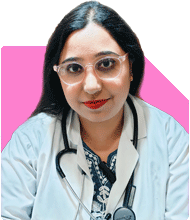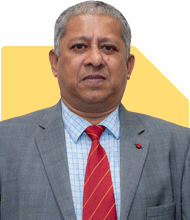.jpg)
Hi Sir, I am 35 years old and my take home salary is 1 lakh. I took home loan of 28.75 lakhs for 15 years tenure in December 2024 and till now I have closed loan of 5.4 lakhs in total amount and reduce the tenure to 130 months. My home loan emi is 28718 and I am paying additional 20000 every month. I have medical insurance for 10 lakhs and started mutual fund of paragh flexi cap fund of 5000 rupees from last month. Apart from this, I opted for post office sanchay par scheme(till 50 years of age) for 5 lakhs and completed three years. My monthly spending is around 25k to 30k which I can control to 20k. My kid is studying in UKG (ISCE) school and his fee is 57k for an year. I am buying stocks on small quantity (dr.reddy -5 every month, ITC - 10 every month, Karnataka Bank -20). I have car maintenance and insurance of 16000 per year and bike insurance of 1200. I also additionally have 7 lakhs medical insurance in my office for my family and 5 lakhs medical insurance for parents in my office. Started saving 10k every month from last month for emergency fund and planning to have atleast 3 lakh as emergency fund.Please let me know my mistakes and advise my good financial plan. Give me good planning to focus on my future. I need a good retirement corpus and i am strongly not planning for any loans or emis
Ans: ? Overview of Your Current Situation
– Age 35, salary Rs.1 lakh take?home monthly.
– Home loan of Rs.28.75 lakh taken in Dec?2024.
– EMI is Rs.28,718 plus Rs.20,000 extra principal each month.
– You’ve repaid Rs.5.4 lakh so far and shortened tenure to 130 months.
– Medical insurance of Rs.10 lakh in place.
– Mutual fund SIP of Rs.5,000 in a flexi?cap fund started last month.
– Post Office scheme: Rs.5 lakh for 50?year tenure, 3 years completed.
– Monthly expenses Rs.25–30k; aim to reduce to Rs.20k.
– Kid in UKG school with annual fee of Rs.57k.
– Small quantity stock investments monthly (Dr Reddy’s, ITC, Karnataka Bank).
– Car and bike insurance/maintenance costs ~Rs.17,200 annually.
– Additional employer-provided medical cover of Rs.12 lakh total.
– Emergency fund saving has just begun at Rs.10k/mo aiming for Rs.3 lakh.
– Retirement goal without further loans or EMIs.
? Mistakes and Areas to Correct
– High EMI burden: EMI + extra payment consumes nearly half your net salary.
– Insufficient emergency fund: Needs 3–6 months expenses (Rs.60–80k minimum).
– Single mutual fund exposure: Just one fund limits diversification and goal alignment.
– Post Office scheme rigidity: Locked till age 50; lower return compared to MFs.
– Small direct stock investments: Without diversification adds unnecessary risk.
– Insurance gap: Health cover seems fine, but consider top?up if family needs grow.
– No retirement planning fund: Start building your retirement corpus systematically.
? Debt Management Strategy
– You are overpaying home loan principal every month.
– Extra prepayment is reducing interest but strains cash flow.
– Consider reducing extra EMI temporarily to free funds for investments.
– Evaluate interest rate of loan vs. expected returns from investments.
– If loan interest > 8–9%, additional repayment still makes sense.
– But balance is needed to avoid liquidity crunch.
– Aim to clear home loan by around age 50 ideally.
? Emergency Fund Setup
– Emergency corpus must cover at least 3–6 months of expenses.
– At Rs.20k/mo spending, this equals Rs.60–120k.
– You’ve started but need to accelerate savings.
– Increase to Rs.15–20k monthly until target reached.
– Hold this in a liquid or ultra?short mutual fund.
– This ensures safety and instant access in crises.
? Insurance Cover Review
– Your term life insurance is essential and sufficient for now.
– You have employer and personal health cover totalling Rs.12 lakh.
– Consider higher cover if your child grows or dependents increase.
– Don’t mix investment and insurance; avoid ULIPs or endowments.
– You have no LIC/ULIP, so no need for surrender or reinvestment advice.
– Add critical illness or accident cover depending on family needs.
? Investment Allocation Strategy
– You can invest Rs.55k minus EMI and liabilities.
– After EMI and expenses, aim for at least Rs.30k–Rs.40k/month towards investments.
– Build a diversified portfolio across fund categories:
Equity diversified/flexi?cap – core growth
Large?cap or multi?cap – stability with growth
Mid?cap / small?cap – for higher returns potential
Hybrid balanced – moderate risk with income
Debt funds – safety and regular plan support
– Example monthly SIP allocation:
Equity diversified/multi?cap: Rs.12,000
Mid?cap: Rs.8,000
Small?cap: Rs.5,000
Hybrid balanced: Rs.7,000
Debt fund: Rs.8,000
Flexi?cap fund: retain your existing Rs.5,000
Liquid fund: Rs.5,000 to build emergency fund
– This gives ~65% equity and 35% debt allocation—suitable for your age and goals.
? Why Actively Managed Funds Over Index Funds
– You currently invest in a flexi?cap fund (actively managed).
– Index funds simply mirror the market, can’t generate outperformance.
– In Indian markets, inefficiencies allow actively managed funds to add value.
– Through regular plans, you get professional insights, rebalancing, and goal tracking.
– Direct plans lack this oversight.
– Actively managed funds with CFP?driven review give structure and better results long term.
? Handling Existing Investments
– Evaluate your flexi?cap fund’s performance and risk profile.
– If aligned, retain it; otherwise, consider switching.
– Use a Systematic Transfer Plan (STP) to bring the Post Office scheme into your diversified portfolio gradually.
– Gradual transfer reduces timing risk and improves return potential.
– Stocks: your small direct holdings are okay for learning, but limit exposure to 5% of portfolio.
– Consider increasing mutual fund investments for core wealth growth.
? Goal-Based Planning for Your Child
– Your child is in UKG; school fees are Rs.57k per year.
– Account for rising education costs as years progress.
– Establish a dedicated SIP for education, such as Rs.5,000 per month.
– This ensures education costs are covered without derailing retirement goals.
? Retirement Corpus Building
– Start now with a plan aiming for Rs.2–3 crore by age 60.
– You have 25 years horizon.
– With the suggested SIP allocation, and annual increment, your goal is achievable.
– Increase SIPs as salary rises; consider using bonuses and increments for top?ups.
– Keep reviewing allocations annually.
– Regular contributions compound effectively over long periods.
? Portfolio Review and Rebalancing
– Review portfolio every 12 months.
– Evaluate fund performance, fund manager track record, style drift.
– Rebalance to your original allocation if drifted more than 5–10%.
– Increase allocation to goals (child education, retirement) as life evolves.
? Tax Awareness and Efficiency
– Equity fund profits: LTCG over Rs.1.25 lakh taxed at 12.5%, STCG at 20%.
– Debt fund gains taxed as per income slab.
– Hybrid funds taxed like equity after 3 years.
– Use long?term holds and small systematic exits for tax efficiency.
– Retirement and education goals benefit from tax?efficient structures.
– A Certified Financial Planner can help optimise your tax strategy within investment plan.
? Behavioural Finance – Stay Disciplined
– Market swings are normal; do not react emotionally.
– Avoid stopping SIPs during corrections.
– Trust your planning and professional evaluations.
– Stay focused on your long?term goals.
– Periodic small top?ups during dips can improve returns.
? Role of a Certified Financial Planner
– Helps define goals and timelines clearly.
– Designs asset allocation per risk profile.
– Selects right fund categories and performs due diligence.
– Performs regular review, rebalancing, and progress tracking.
– Helps with tax?efficient investment and withdrawal planning.
– Reduces emotional errors and increases returns over time.
? Final Insights
– You have strong earning and saving habits.
– Your EMI discipline and additional principal repayment are commendable.
– Mistakes lie in insufficient emergency fund and limited diversification.
– You must build better liquidity buffers and diversify investments.
– Shift Post Office scheme into mutual funds via STP gradually.
– Increase SIP to Rs.30–35k/month initially, with education SIP too.
– As EMI burden reduces, ramp up investment to Rs.40–45k/month.
– Continue contributing small direct stock amounts as learning exposure.
– Prioritise actively managed mutual funds via MFD and CFP guidance.
– Review your portfolio regularly and rebalance yearly.
– Stay insured and build goal?specific funds.
– This structured strategy will help you retire comfortably.
– It ensures your kid’s education is funded.
– And keeps you loan?free, financially secure, and future?ready.
Best Regards,
K. Ramalingam, MBA, CFP,
Chief Financial Planner,
www.holisticinvestment.in
https://www.youtube.com/@HolisticInvestment


















.jpg)









